Beginning your House History.
By Christina Ealing-Godbold, Research Librarian, Information Services | 31 July 2020
Travel back in time and glimpse the rich and vibrant story of your house. If walls or floorboards could talk, what stories would they tell? Your house history provides a glimpse into social history and illuminates how events and trends affected the everyday lives of the inhabitants of an Australian city.
Gradually build the story of your house by following our five house history videos. We outline the resources of State Library of Queensland and other local Archives that can be used to tell the story of your house.
This blog series will guide you through:
- beginning your research
- using maps to place the land in context
- understanding architectural styles
- learning about the inhabitants of the house over time
- placing the house in the context of the suburb, town or region in which it is located.
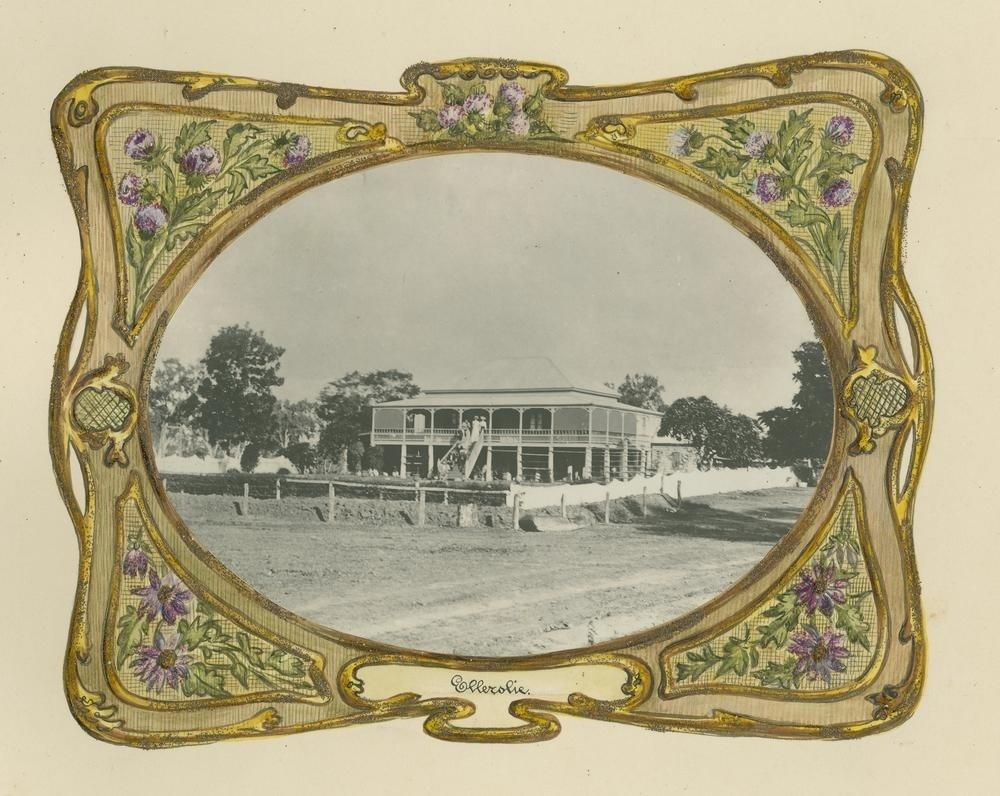
Ellerslie Homestead, home of Robert Philp, 1913; API-68 Robert Philp Illuminated Photograph Album,
John Oxley Library, State Library of Queensland, Image number: API-068-0001-0002.
Part of: API-68 Robert Philp Illuminated Photograph Album, Accession number: 2301. View related images: http://hdl.handle.net/10462/comp/636.
Start with what you know
Begin by collating the information that you already know – family stories, information from neighbours, details of the house style and construction. The RP (Real Property) details from your rates notice will also be useful. Older residents in the street may remember when the house was built or the family that lived there. Usually, they will be delighted to be asked about the history of their street and you may learn many interesting facts and hear great stories. Older residents may also have photographs of the street or the house when they first moved into their home, and this can show other homes under construction. Offer to share any information you find with them, as they may also find great information on their home at State Library.
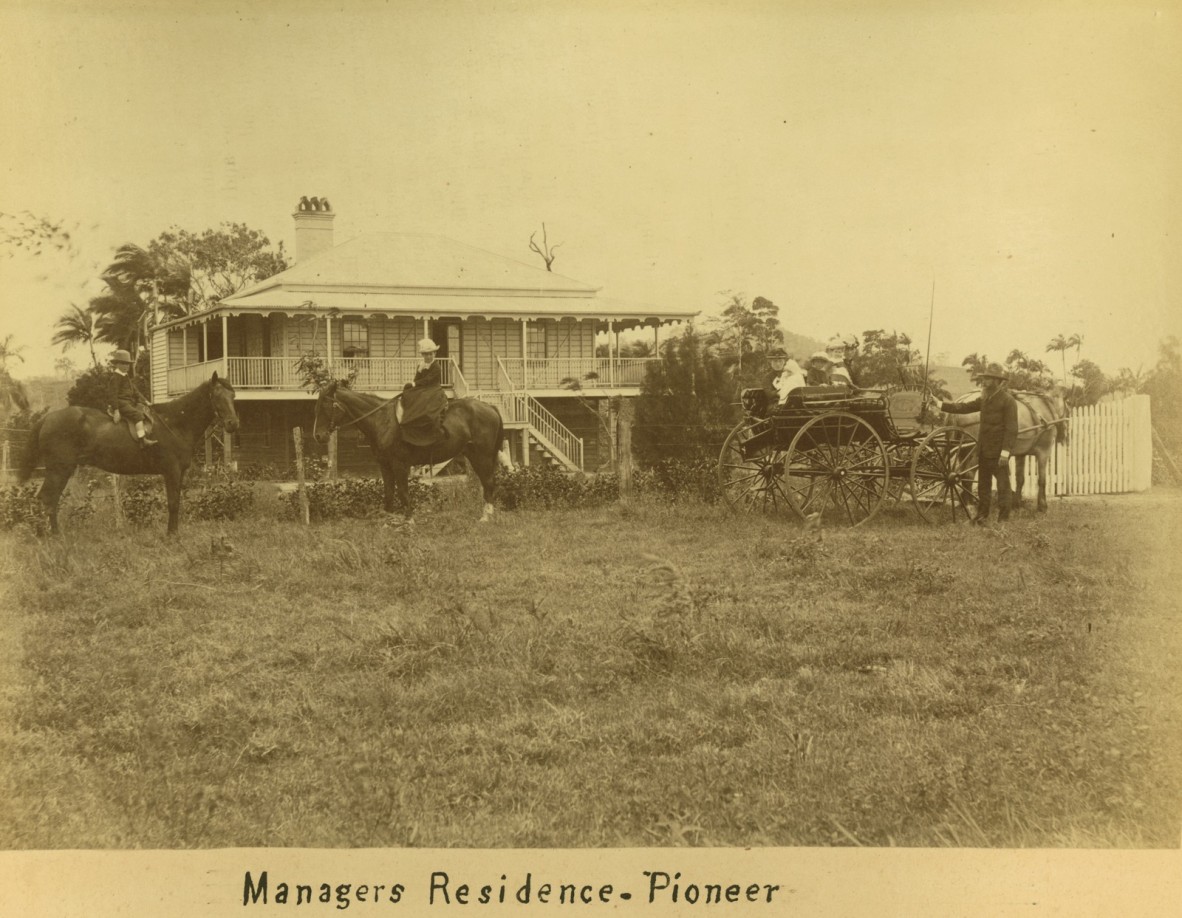
Manager's residence at the Pioneer Sugar Plantation outside Mackay, ca. 1880; 6298 Brandon Photograph Album
John Oxley Library, State Library of Queensland, Image number: 6298-0001-0037.
Observe carefully
Observe as much about the house as possible. Take photographs of the house and of any products with commercial names such as roofing material, iron lace or window latches and hoods. Don’t forget to check under the veranda roofing iron. A worker’s cottage in Paddington thought to have been built in 1910 was discovered to have been constructed in 1884. The date was established by the tell-tale information revealed under the roofing iron.
Also take photographs of any evidence of extensions and joins which may indicate a renovation to the house. Observe the roof line and estimate the angle of the roof. A general rule to apply to your observations is ‘the steeper the roof, the older the house’, although this does not always apply. How wide are the weatherboards? Have they been chamfered to fit together? Are they used horizontally or vertically? Have bricks or tiles been used? If there are any spares under the house, look to see if there are any marks or names on them. Brickyards typically named their product. Look at the veranda roof – is it separated from the main roof and does it have decorative balustrade? A walk underneath the Queenslander house will often provide extra detail – observe the changes in types of floorboards used or even the kind of pipes used – ceramic or cement or even plastic.
Observe inside the house as well as outside. Floorboards are important – what colour are they? How are they laid and finished? Are they polished, painted, ‘black Japanned’ or covered? What decoration is used on the ceiling or walls inside the house? Are the cornices decorated or are there pressed metal ceiling decorations? Fireplaces and formal spaces can also indicate the look the owners were creating and help indicate a date. Window hoods changed over time, as did windows themselves. Look closely at the kind of windows and find any unusual markings that may assist your research. What was the original house plan? Did the kitchen always exist in that area, or was it originally free standing with a linked walkway?
The answers to all these questions can help to date the house and inform decisions about the building style used.
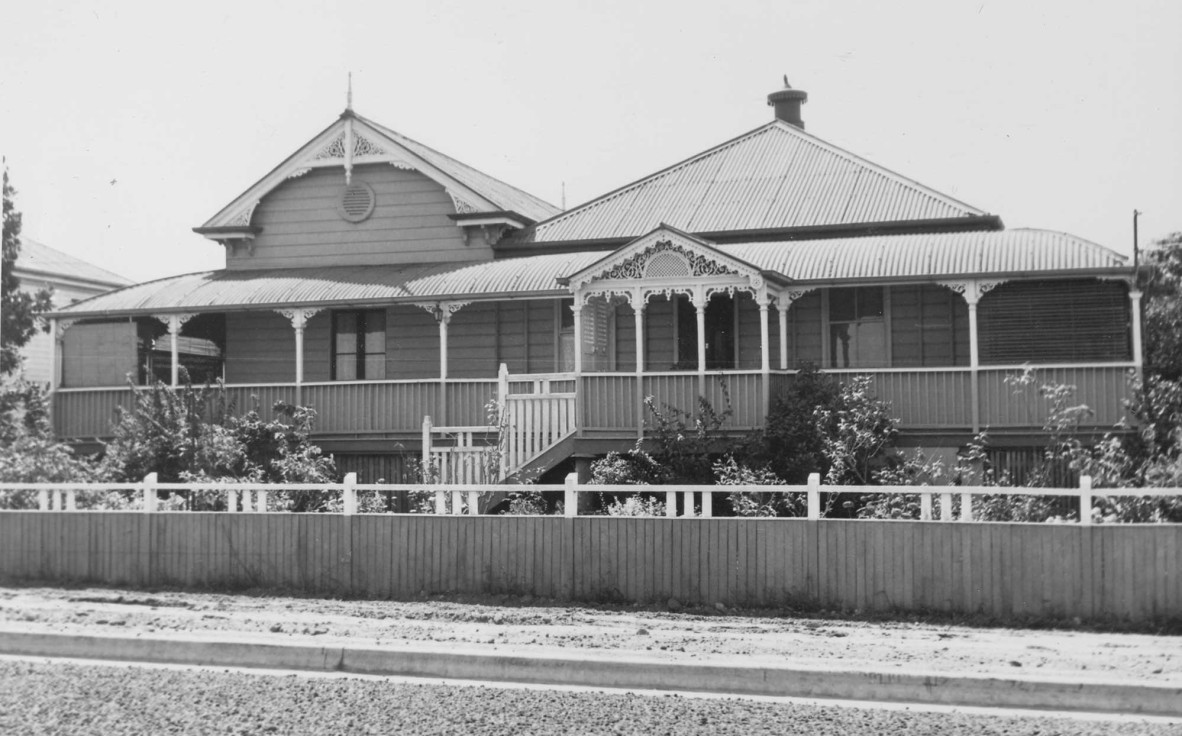
Corley Explorer image of 26 The Terrace, North Ipswich.
Corley Explorer image of 66 Chermside Road, Ipswich.
Inside the parlour of a 1915 home, John Oxley Library, State Library of Queensland, Negative number: 126337, https://hdl.handle.net/10462/deriv/78754.
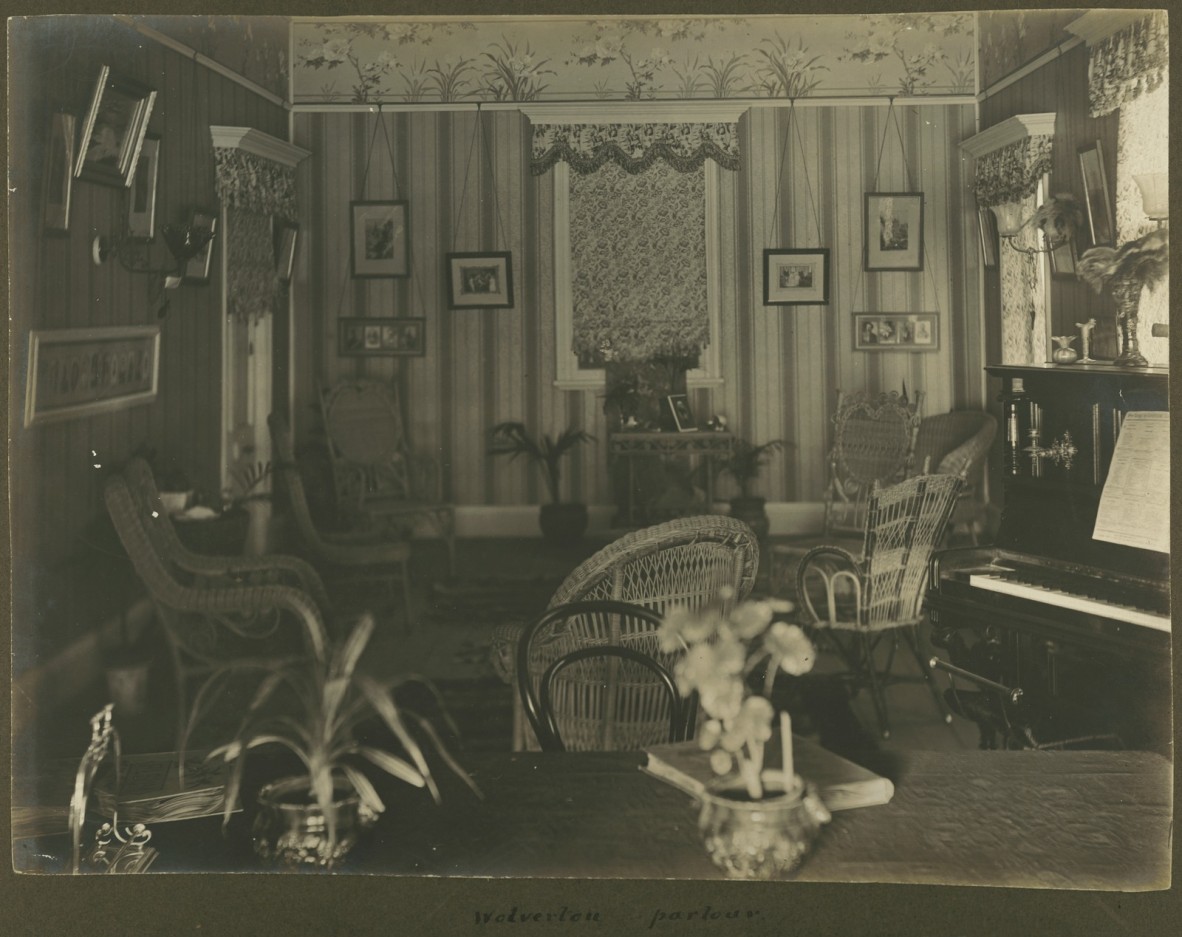
Parlour at Wolverton, Townsville, residence of the Tunbridge family, ca. 1895;
John Oxley Library, State Library of Queensland, Image number: APE-082-0001-0007.
http://hdl.handle.net/10462/deriv/124209
Record your observations
Use a notebook or word document or even notes on your phone to document your progress. Lot numbers, subdivisions, house names, estate names and architectural observations should all be recorded as you find them. This will help make your research journey easier.
Find the right house!
It is important to have some guidelines to undertake the house history – some information that may lead in the right direction and inform your research. A lot of time can be wasted by searching the wrong allotment of land, or by thinking that a family lived in one house, when they actually lived in the house next door or across the road. Identifying the correct house and block of land is made more difficult by the fact that early directories did not use house numbers, but rather the name of the house. In Post Office Directories, the names listed at the address can be tenants rather than owners and if tenants changed frequently, this can also make ownership difficult to establish.
Obtain the historical Title documents
A useful step to assist in understanding the land ownership is to obtain the historical Title Documents that show the transfers of land from when the land was first given for freehold ownership by the Crown through to the current day. The title documents will give you the names that are associated with the ownership of the land. While they do not specify when houses were built, a mortgage taken over the land usually is a strong indicator that a house was soon to be constructed.
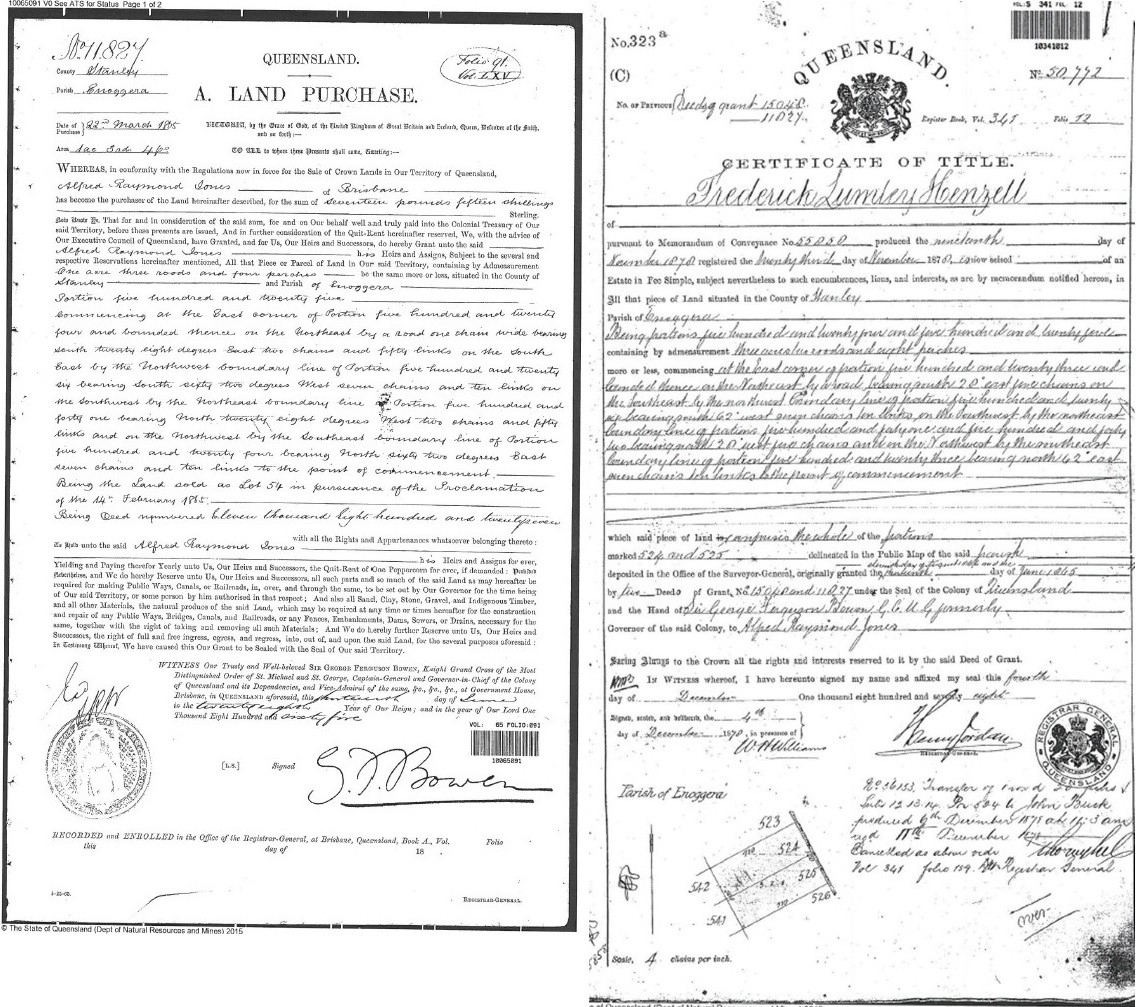
Department of Natural Resources and Mines. Certificate of Title. Por 525, Enoggera.
The historical title document can be purchased for a modest fee from:
Brisbane Titles Registry Office
Floor 11,
53 Albert Street, Brisbane
Titles enquiries ph. 1300 255 750
Online ordering service also available.
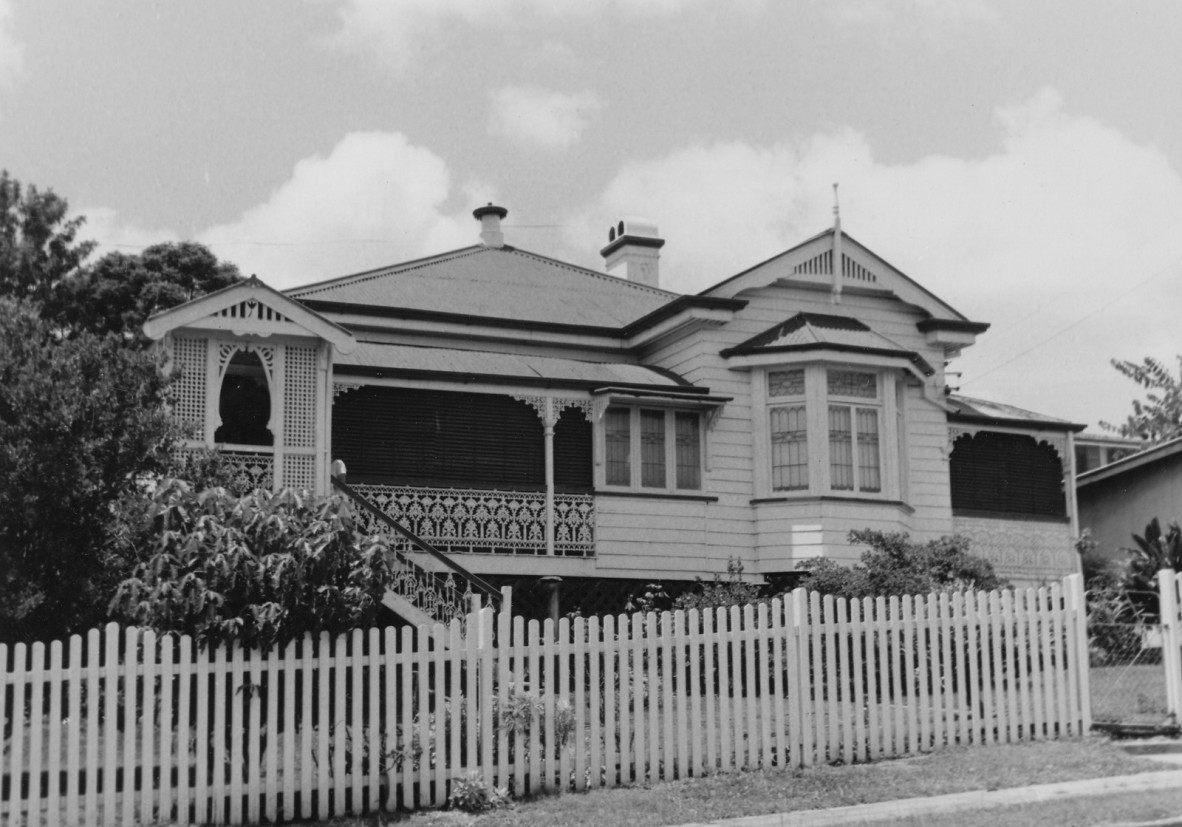
Corley Explorer image of house in Clayfield/Wooloowin.
We hope you enjoy your sleuthing journey, and that you will discover not only the history of your house but more about its local suburban context and the fabric of the society in which it existed over time.
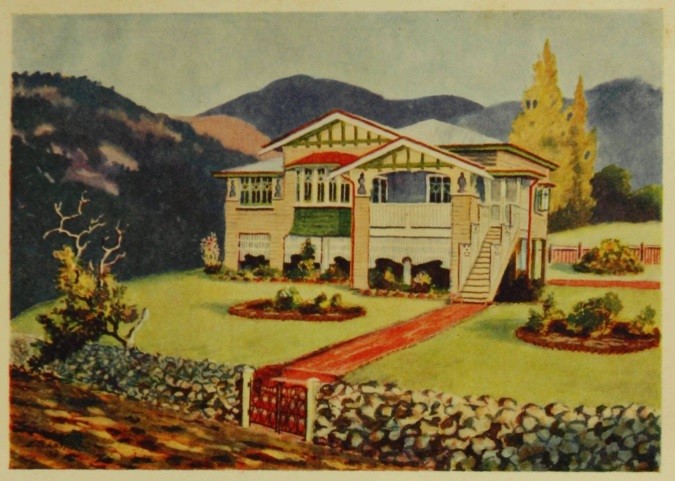
Image appearing in booklet 99 everyday homes for Queenslanders, Brisbane : Home Building Publishing Company, 1939, p.67
Visit State Library’s house histories webpage and ensure you know the range of resources that are available for your search. Staff at State Library will help you navigate through these resources and provide suggestions for further research.
Come back soon to read the next blog in this series, which will help you understand the land on which your house stands, and help you put it in context by using maps.
#HouseHistoryBlogSeries
[This is blog no. 1 of 5 in the House Histories Blog Series]
More information
House histories - /research-collections/queensland/built-heritage/house-histories
Corley Explorer - https://explorer.corley.slq.qld.gov.au/
One Search - http://onesearch.slq.qld.gov.au/
Ask us - /plan-my-visit/services/ask-us
Comments
Your email address will not be published.
We welcome relevant, respectful comments.